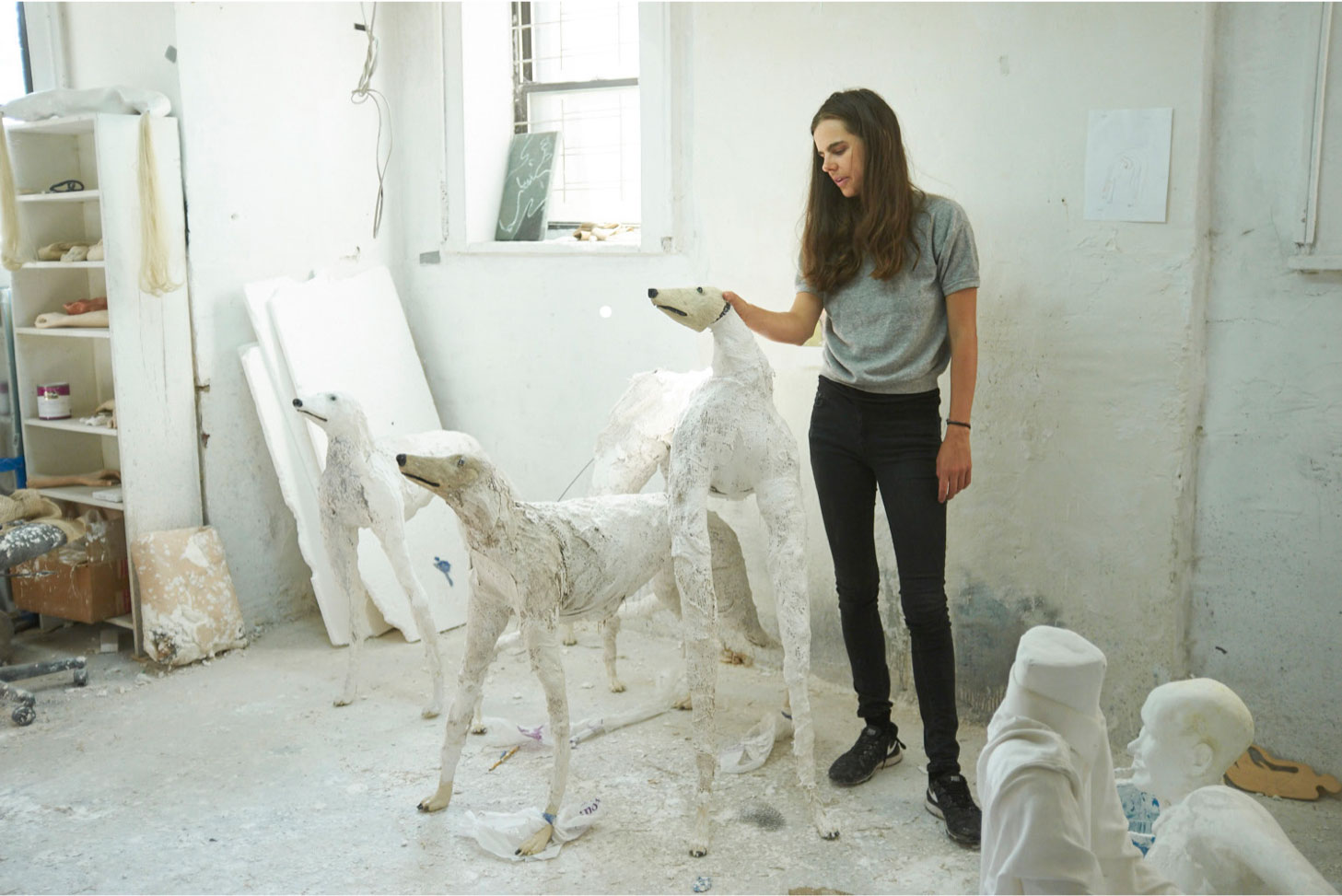
Elizabeth Jaeger - Why I Create
Exploring the inspirations and attitudes of artists working with clay and ceramic, featured in Vitamin C
After early experiments with performance, Elizabeth Jaeger turned to making three-dimensional female nudes that stood in for her own body. The figurative sculptures were intended to create in the viewer the same kind of self-awareness that performance can: a presence that heightens one’s cognizance of a shared time and space. Crafted from ceramic and hydrocal (a form of gypsum that dries hard like plaster), the life-size figures strike both familiar and unusual poses.
The matte blackness of many of Jaeger’s sculptures draws us in, their surfaces recording the artist’s gesture and touch. But Jaeger delivers these haptic objects on and within industrially fabricated steel structures: shelves, tables, pedestals and vitrine-like structures, the cold hardness of which contrasts with the organic character of the clay. This display strategy places distance between the vessels and both their making and their reception. Jaeger’s vessels are at once physical objects and standins for the ideas of those objects; as such, they represent loss and mortality.
Here the Vitamin C: Clay and Ceramic in Contemporary Art featured artist tells us how clay can record history, and how the vulnerability of the medium is both an attraction and a distraction when creating her beautiful, figurative forms.
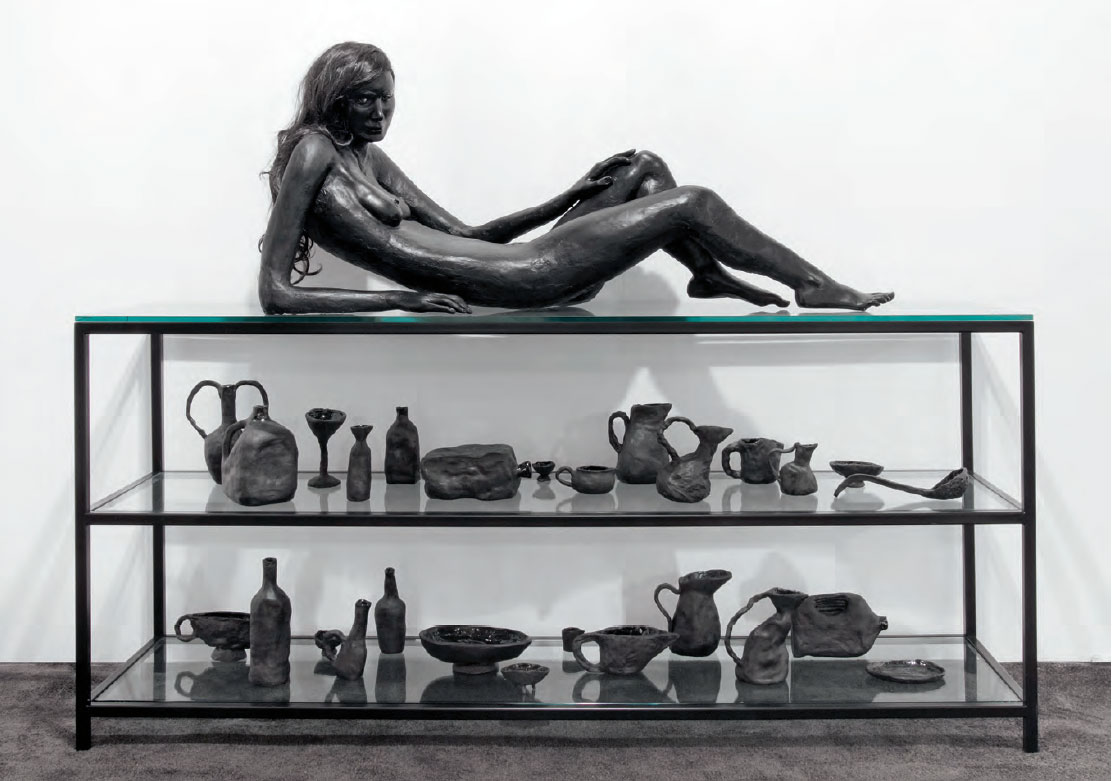
Who are you and what’s your relationship to clay and ceramics? I started working with ceramics as a material that allowed for more detail than sculpted plaster. It was a means to an end. As I’ve continued with it, I’ve become more interested in its history - but remain focused on it’s capacity to act as an imprint of an action - how the clay holds the force put into it, the pressure of the hand, the map of the fingerprints.
Why do you think there’s an increased interest around clay and ceramics right now? Better art shipping companies?
Ceramics is sometimes regarded as decorative, rather than fine arts. Does the distinction bother or annoy you? Ceramics serves a variety of functions, one of them is decorative. Fine Arts is another function. There are also paintings that are decorative, as well as sculpture, photography and so on. This distinction exists in every medium.
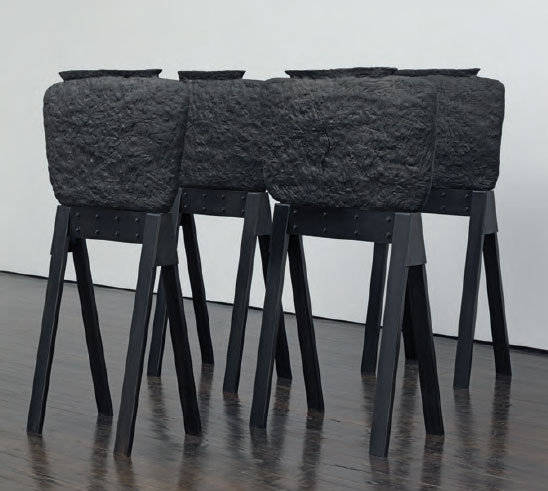
Whose work in this field do you admire? Jessica Jackson Hutchins, Nicole Cherubini, Ruby Neri, Bruce M. Sherman, Ken Price, traditional works from around the world, and my various studio mates’ processes.
What are the hardest things for you to get ‘right’ and what are your unique challenges? The feel of a work, and how it resonates within the space.
What part does the vulnerability of the material play in things? Is it an attraction or a distraction. It’s distracting in that there’s a lot of logistics to keep on top of, but attractive in its poetic resonance. It’s vulnerable in that’s it’s both expressive, and fragile.
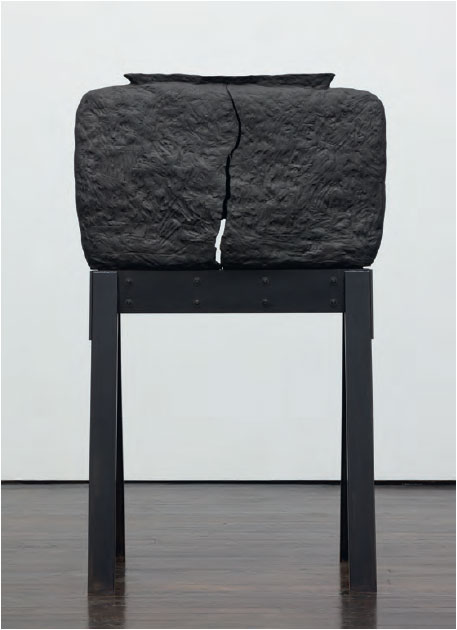
Is how you display a piece an important element of the work itself? Do you ever suggest how something might be displayed? Yes. Each work is a ceramic contained within a larger sculptural “frame” and it’s very important to me how and in what context it’s displayed.
What’s next for you, and what’s next for ceramics? Projects abroad and collaborations with friends.
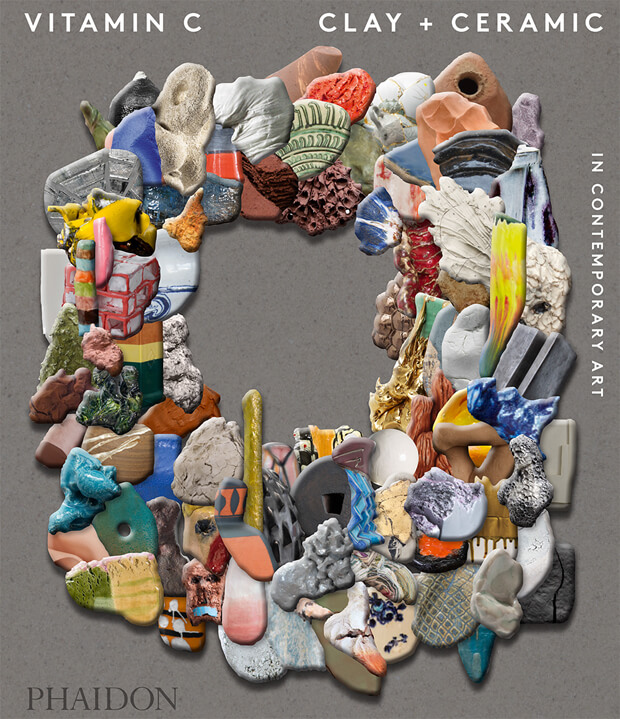
Clay and ceramics have in recent years been elevated from craft to high art material, with the resulting artworks being coveted by collectors and exhibited in museums around the world. Vitamin C: Clay and Ceramic in Contemporary Art celebrates the revival of clay as a material for contemporary artists, featuring a wide range of global talent selected by the world's leading curators, critics, and art professionals. Packed with illustrations, it's a vibrant and incredibly timely survey - the first of its kind. Buy Vitamin C here. And if you're quick, you can snap up works by Elizabeth Jaeger over on Artspace.